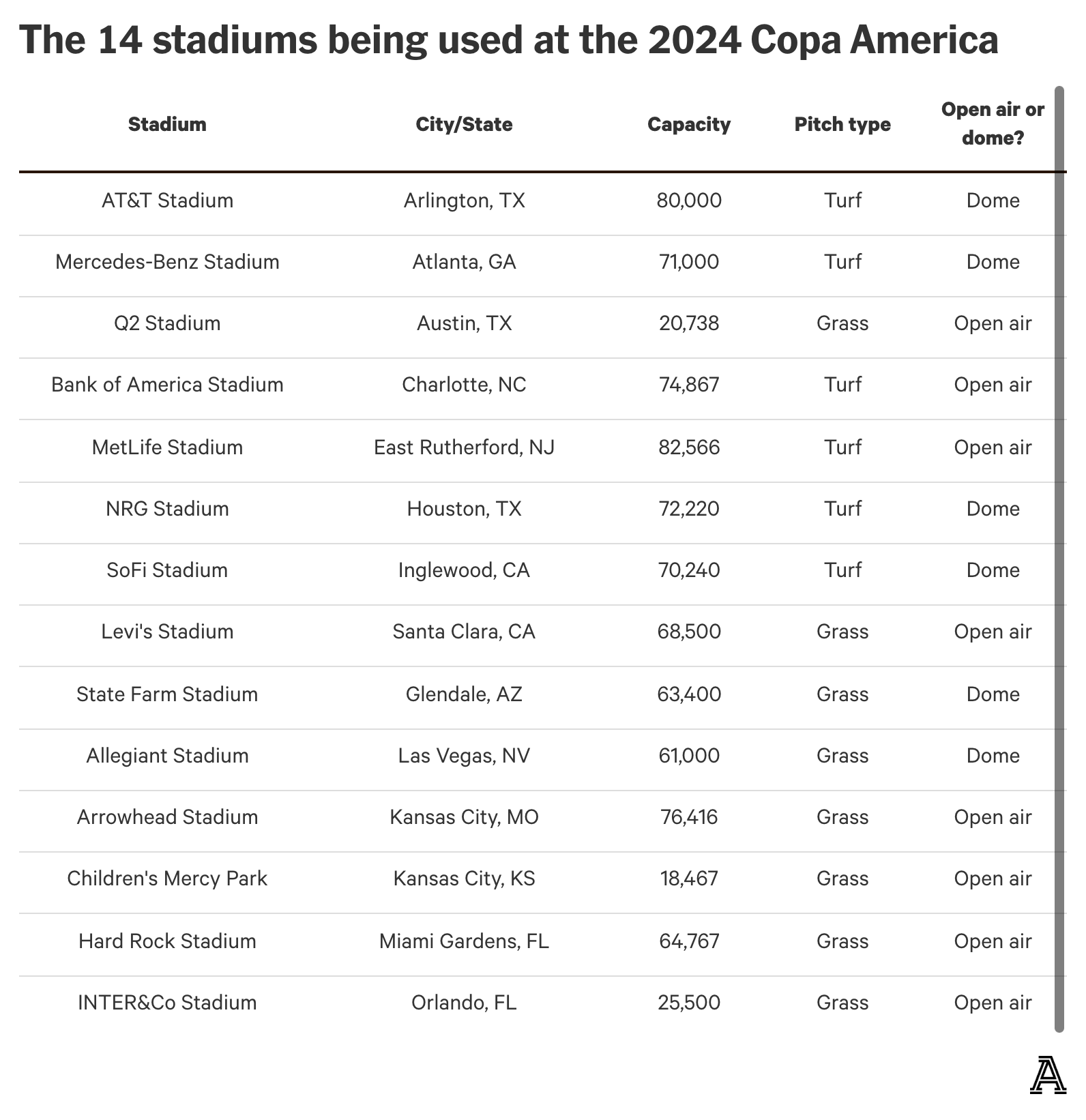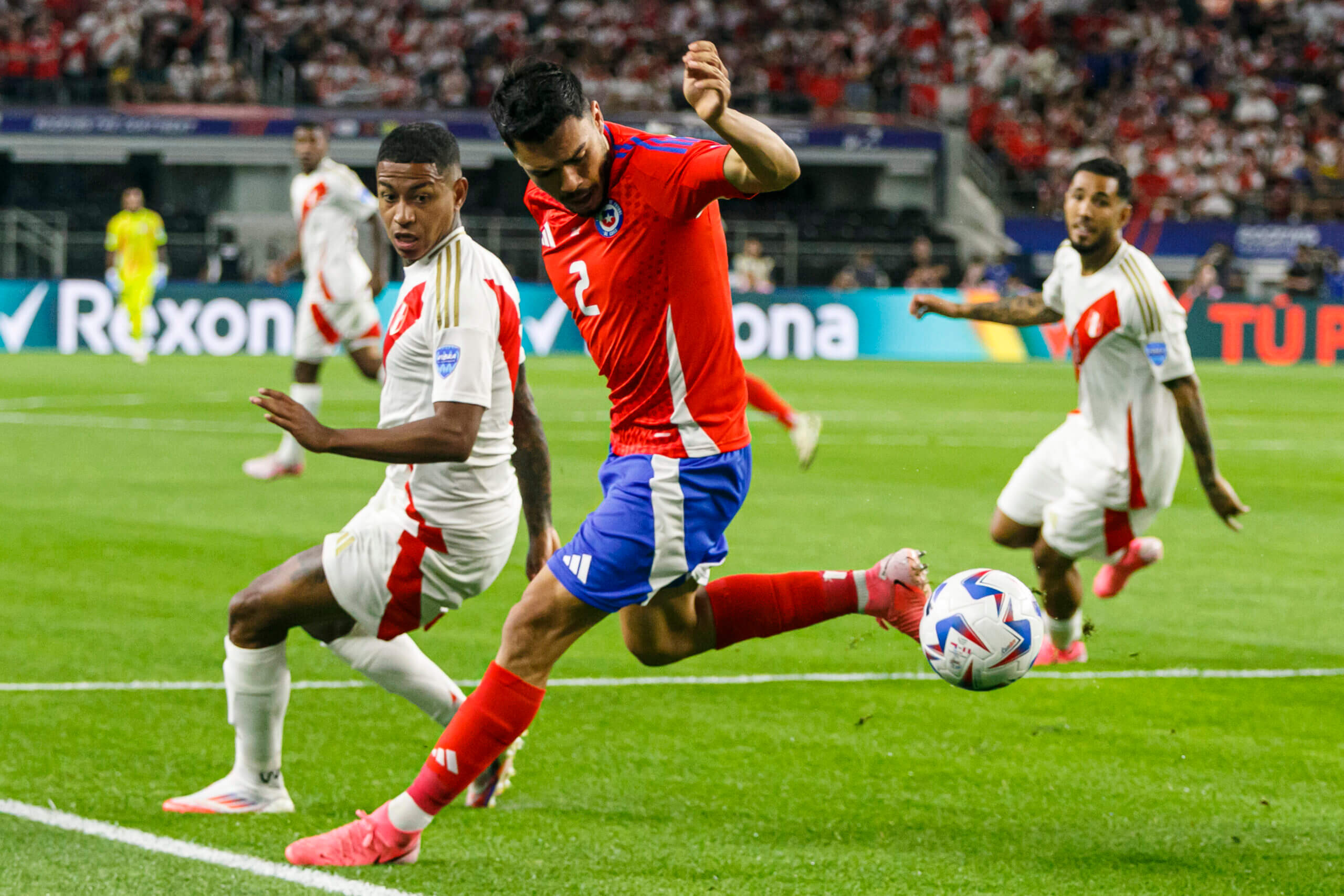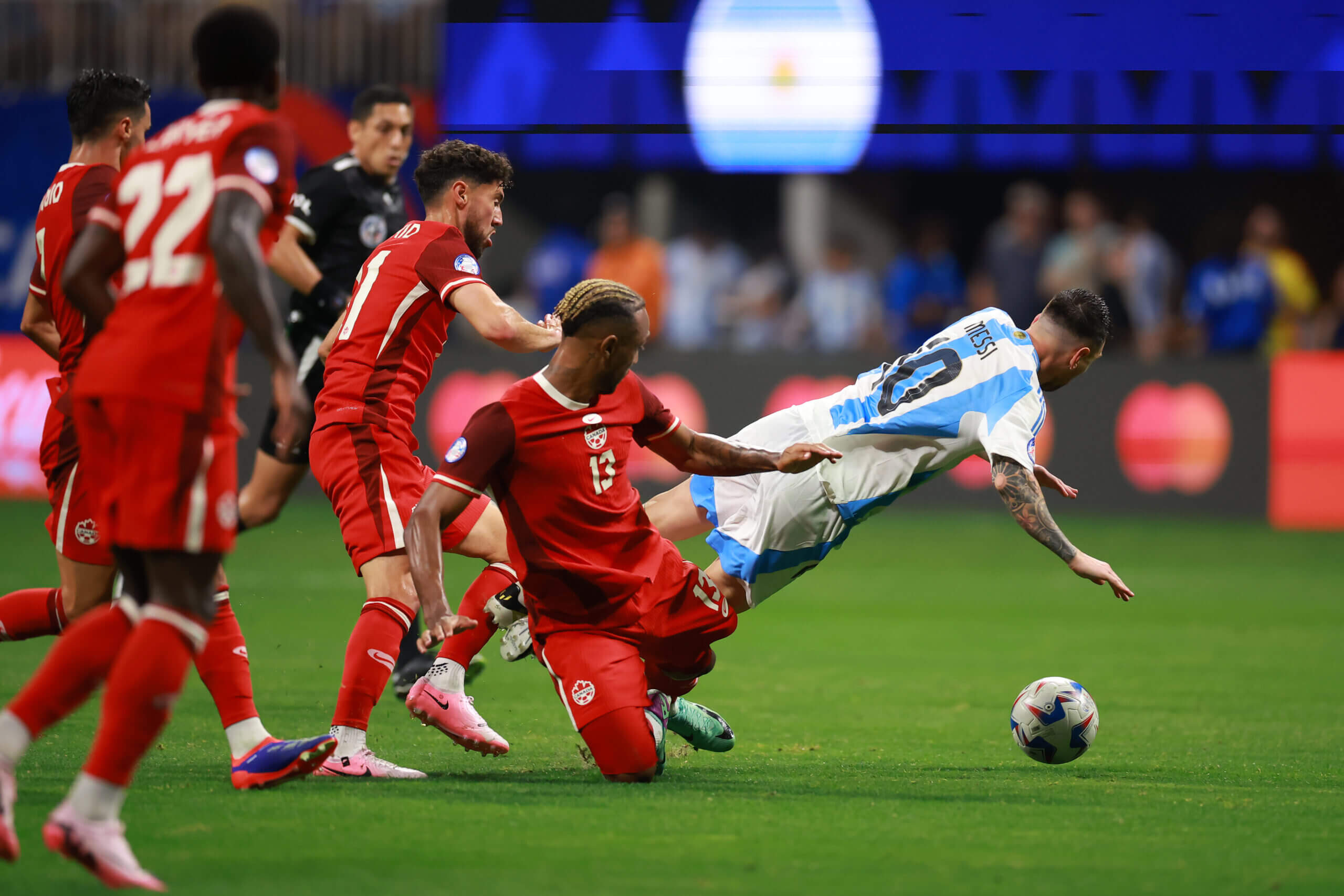If TripAdvisor covered the playing surfaces of the Copa America, the reviews would be alarming. “A disaster”, “frustrating” and “bad for show” are some of the complaints from players and managers.
The big soccer tournaments have arrived in the United States this week and there is one aspect that is causing concern – just like the European Championship in Germany, but for very different reasons.
Colombian singing superstar Feid performed at the Copa America opening ceremony in Atlanta on Thursday, but what followed certainly wasn’t “perfect.”
After Argentina’s 2–0 victory over Canada at the Mercedes-Benz Stadium, the playing surface was heavily criticized by the players and Argentina head coach Lionel Scaloni.
Then, after Chile and Peru drew goalless the next day, both coaches added their own notes of caution regarding the field at AT&T Stadium in Dallas, Texas, where the U.S. men’s national team kicks off Sunday his campaign against Bolivia.
Peru coach Jorge Fossati identified this as a possible reason why his captain, Luis Advincula, had to be withdrawn due to Achilles tendon pain.
“It came out of nowhere,” Fossati said after the Peru match. “I realize it’s a grass pitch today, but it’s not normal grass. It is not grass that is born and grows (naturally). It’s an herb that they bring from elsewhere.
“It can be a little bit harder surface and it can affect you in that specific spot (the Achilles tendon). I’m not a doctor but I’ve been playing football for a few years. Achilles injuries can also be the cause.
Of the 14 host stadiums used during the tournament – all approved by world governing body FIFA – eight have pre-existing or retractable grass pitches and can be deployed.

The final will be played at Hard Rock Stadium in Miami, home of the NFL’s Miami Dolphins, which has a Bermuda turf surface. The Hard Rock hosts two group matches – Uruguay v Panama on June 23 and Argentina v Peru on June 29 – then Feid is in town on July 6 before the final eight days later.
The United States will play its second group match against Panama next week in Atlanta, on a surface that did not please Argentina, and USMNT midfielder Weston McKennie expressed his own worry.
“It’s frustrating, especially as a player,” he said. “You’re playing on a football field, with grass laid down that’s all uneven and breaking up every step you take. It’s frustrating.”
The playing surface at AT&T Stadium should be better than the turf that has drawn so much opprobrium in Atlanta.
The Mercedes-Benz is a 73,000-capacity arena shared by Atlanta United of Major League Soccer and the Atlanta Falcons of the NFL. It is an artificial turf surface which is sometimes replaced by a grass pitch placed on top of it.
Atlanta United played a home match on grass on Saturday, June 15, and the turf field was laid the next day, five days before Thursday’s match.
In Dallas, however, the task of converting the field from its normal surface to grass began on May 21.
The standard playing surface at AT&T Stadium was removed before the topsoil was placed on top of the concrete. Then, on June 10 – 11 days before hosting Peru and Chile – turf boards made from Kentucky bluegrass from a Colorado farm were laid.
This bluegrass was transported to Dallas from Colorado in refrigerated trailers before the Cowboys grounds crew began working on it.
If you’ve walked past the Death Star and noticed a strange pink glow emanating from inside, the UV grow lights at AT&T Stadium are hard at work to #CopaAmerica2024 lawn installation. Complete irrigation system, 10″+ of topsoil and Kentucky bluegrass. pic.twitter.com/z64LlD6zEv
-Pierre (@peet2) June 13, 2024
Cowboys officials know the eyes of the football world are on their stadium and hope there won’t be any major problems during the USMNT opener.
There’s also recognition behind the scenes at AT&T Stadium that they’ve been on a learning curve. In March, it hosted the CONCACAF Nations League final, which saw the USMNT beat Mexico 2-0. In pregame coverage, CBS Sports host Susannah Fuller called the field “uneven” and “less than ideal.”
To improve, and with the added impetus of having to host the World Cup in two years, the Cowboys have made new efforts to get it right. An irrigation system to keep the grass watered was placed under more than 10 inches of topsoil, while huge artificial grow lights that could be lowered and raised were installed to provide light for rapid growth and a good health.
USMNT head coach Gregg Berhalter said Saturday: “We were here in the Nations League in March and this field seems to be a lot better. It appears to be a sand base, which makes it a lot softer, but the grass itself looked really nice and we were pleasantly surprised by the playing surface.”
Defender Chris Richards was also happy with Arlington’s surface. “I thought the field looked good,” he said. “It looked like real grass, you couldn’t really see any holes in it. So I’m very excited to play on it.
Chile coach Ricardo Gareca, however, said his players felt the surface was dry on Friday evening, even though it had been heavily watered before kick-off and at half-time.
“The ground, they told me it was very dry,” he said. “It was a smaller estate, a very small estate. So, we have to continue to adapt.

Both managers criticized the surface for Peru’s 0-0 draw against Chile (Carlos Sipan/Eurasia Sport Images/Getty Images)
“It’s something that we will analyze on everything because logically with a small field, with a dry pitch, sometimes it accommodates one team better than the other.”
The inevitable problem could be that turf laid on concrete, or even the more thorough process followed in Dallas, is not the same as top-tier permanent pitches in Europe and South America.
John Mallinson is the founder of a British company that has built pitches for Wembley Stadium, Manchester United and Manchester City, among others, during his 40-year career. The Lancashire-based expert says the quality of surfaces depends on excellent drainage and grading of sub-surfaces.
“Being in bed a few days in advance wouldn’t necessarily be a problem in itself,” he said. “If the material underneath isn’t capable enough of holding water, then you’re going to have problems.
“It will also depend on fine details such as the particle size of the sand used under the root zone (a mixture of soil and sand common on many Premier League pitches). You need a strong enough root zone to be able to take a dowel or blade without it tearing.
Mallinson believes poor drainage on heavily watered pitches could cause the “trampoline” effect described by Argentina goalkeeper Emiliano Martinez, who called Atlanta’s surface a “disaster” that “jumped on you while you were running.” .

Lionel Messi is challenged during Argentina’s 2-0 win in Atlanta (Hector Vivas/Getty Images)
“If the drainage system isn’t working properly on a recently grassed field, some areas of the field are wetter than others and you get variable bounce,” he said. “Water flows through cut lines.”
The dilemma with temporary locations, he added, is that they must be watered aggressively to grow sufficiently.
These issues come as no surprise to Nedum Onuoha, the former Manchester City defender who spent two seasons in MLS with Real Salt Lake between 2018 and 2020.
“The problem is that the biggest stadiums in the United States are not soccer stadiums, they are American football stadiums,” he said. “The pitches on MLS grounds are much better. They are more consistent and fair, even during summers, which are extreme in much of America.
“The pitch they set up for games like the Copa can be really inconsistent for movement with the ball and changing direction can be difficult. It cuts a lot because it’s not really there.
“Add in 30C (86F) heat and a field that’s really soft in some parts and uneven in others and you don’t even know how it’s going to bounce back.”
Onuoha is also not surprised by the players’ outspokenness.
“The highest level gives you the opportunity to not have to play on fields that force you to play in a way that you know you don’t usually play,” he said. “The physical toll is therefore higher, both in terms of weather and surface conditions. There are 20 stadiums with pitches in perfect condition, but they are not big enough to do so.
The reality remains that this tournament is just a trial run for the world’s biggest tournament in just two years. It’s about laying the foundation, in every sense of the word, and getting it right.
But the first criticisms are a warning shot: managers and players will not hesitate to denounce them.
(Top photo: David J Griffin/Icon Sportswire via Getty Images)